Ukraine boasts an ancient and rich tradition of embroidery. Folk embroidery was deeply symbolic and connected with a great number of beliefs, myths, and superstitions. At the heart of this tradition was the shirt, known as the vyshyta sorochka or vyshyvanka.
For centuries, Ukrainian embroidery was confined to the rural peasantry. As the Ukrainian national movement gained momentum in the latter half of the 19th century, interest in Ukrainian folk costume and embroidery emerged. By the turn of the 20th century, its influence had permeated urban fashion, serving as a poignant expression of national identity among the nationally conscious Ukrainian population.
This article examines the transformation of Ukrainian embroidery into a national symbol at the end of the 19th century and explores how it underwent modernization in Galicia during the interwar period. This modernization aimed to make it accessible and suitable for the middle class and urban population, enabling them to proudly wear and express their national identity.
Folk Embroidery During the Austria-Hungarian Period
In the later years of the Austro-Hungarian period, embroidery, in particular the embroidered shirt, first started to transition from being a symbol of the Ukrainian peasantry to a symbol of Ukrainian identity. It was also the time when Ukrainian embroidery traditions first started to influence high fashion.
First Use as a Ukrainian National Symbol
During the Ukrainian national movement in the late 19th century, the embroidered shirt emerged as a powerful symbol of Ukrainian identity and a tool in the struggle for the Ukrainian cause. The Ukrainian elite, including prominent figures such as Mykhailo Drahomanov, Ivan Franko, Olena Pchilka, and Lesia Ukrayinka, recognized the significance of traditional Ukrainian attire and actively studied and collected it. At that time, wearing an embroidered shirt was primarily associated with the peasant class, but these intellectuals sought to elevate its status and integrate it into urban fashion alongside European styles. Their efforts included scientific research, artifact collection, museum formation, and organizing exhibitions.
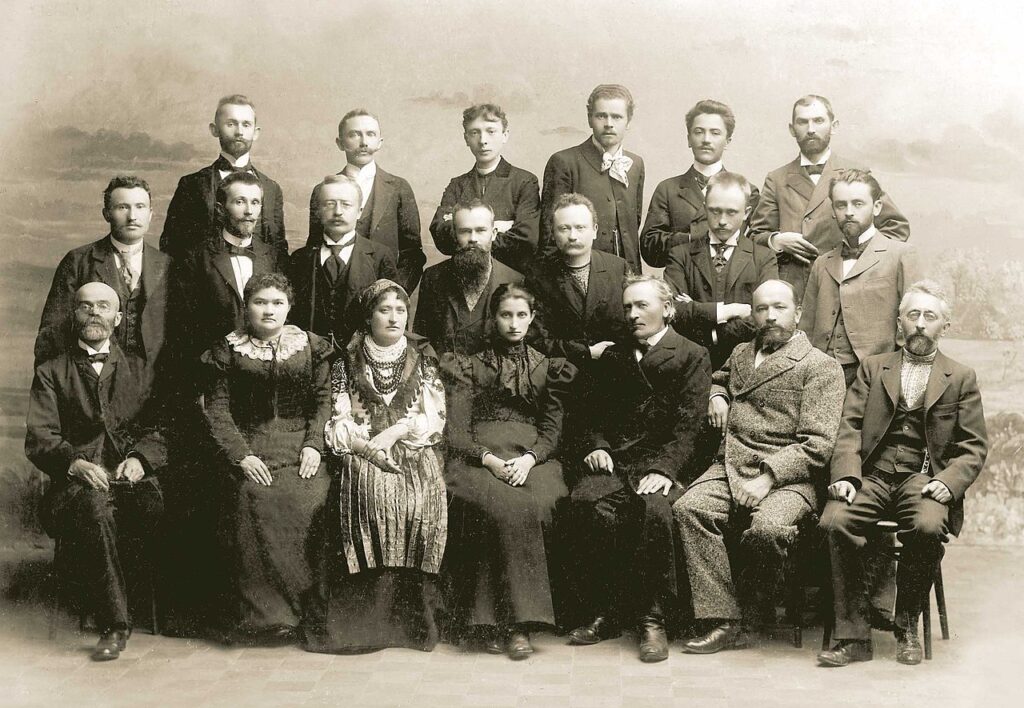
Among these figures, Ivan Franko played a particularly noteworthy role in popularizing the embroidered shirt. He is credited with initiating the trend of pairing an embroidered shirt with a European suit. According to contemporaries, Franko possessed a considerable collection of embroidered shirts, generously gifted to him by friends and acquaintances.
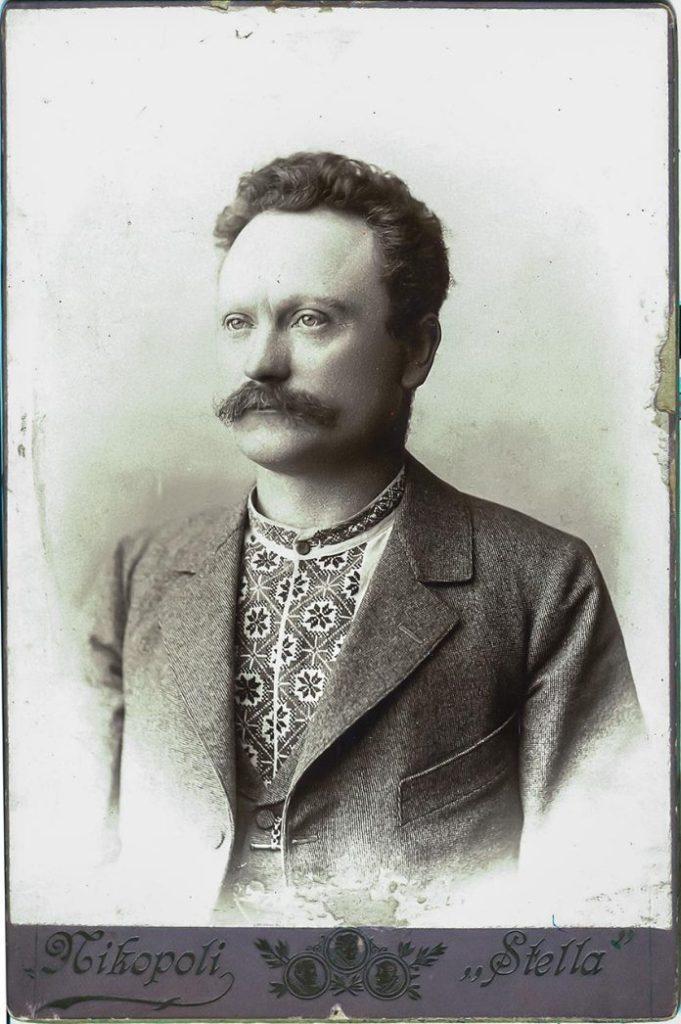
Also worth noting is Archduke Wilhelm of Austria (1895-1948) – a member of the Habsburg family who developed a fascination with Ukrainian culture and became an important figure in the Ukrainian cause. Due to his affinity for wearing Ukrainian embroidered shirts, he earned the affectionate nickname “Vasyl Vyshyvanyi,” meaning Basil the Embroidered.
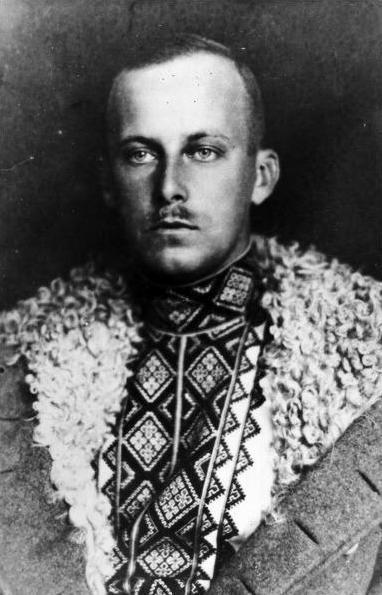
These influential individuals, through their adoption and promotion of ethnic clothing, played an instrumental role in reshaping the perception of embroidery and integrating it into the broader narrative of Ukrainian identity.
First Use in Urban Fashion
During this period, embroidery not only gained popularity among the Ukrainian elite but also made its way into urban fashion.
In Galicia, embroidery became a profound expression of national spirit largely due to the efforts of Lviv’s Rusyn Women’s Club, established in 1892. The club organized workshops, classes, and exhibitions dedicated to Ukrainian embroidery, aiming to educate and inspire women in the craft. They also encouraged the modernization of embroidery designs to appeal to the middle class and urban population, contributing to the wider acceptance of Ukrainian embroidery as a symbol of national identity.
The fusion of folk stylistics and professional Lviv fashion was further facilitated by the rising popularity of the Secession style (Art Nouveau) in Lviv. From 1900 to 1911, a branch of Secession architecture emerged in Lviv, incorporating the folk art of the Hutsuls from the Carpathians and the Gorals from the Tatras. Architects began designing new buildings in the distinctive Hutsul Secession and Zakopane styles, incorporating elements of folk design and ornamentation.
All this influenced the aesthetic preferences of society, and hence fashion. Many artists engaged in clothing design were enthusiastic about Hutsul folk design and ornamentation. As early as 1901, Stanisław Dębicki used stylized folk ornaments (“Hutsul-Zakopane”) in the designed samples of women’s clothing. Olena Kulchytska was another Lviv artist who paid tribute to her passion for folk ornaments in clothing design. She was one of the leaders of the movement of the creative intelligentsia for the preservation of folk art, making titanic efforts to collect, preserve, and popularize achievements of folk culture.

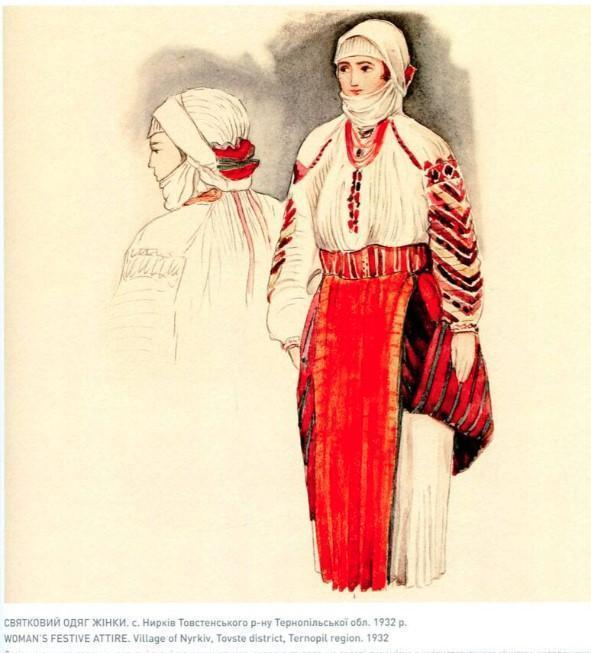
Moreover, the influence of actors from the stages of Lviv played a significant role in the popularization of folk art in early 20th-century fashion. Notably, Solomiya Krushelnytska personally adorned her attire with embroidery, not only on traditional shirts but also on European costumes and uniforms.
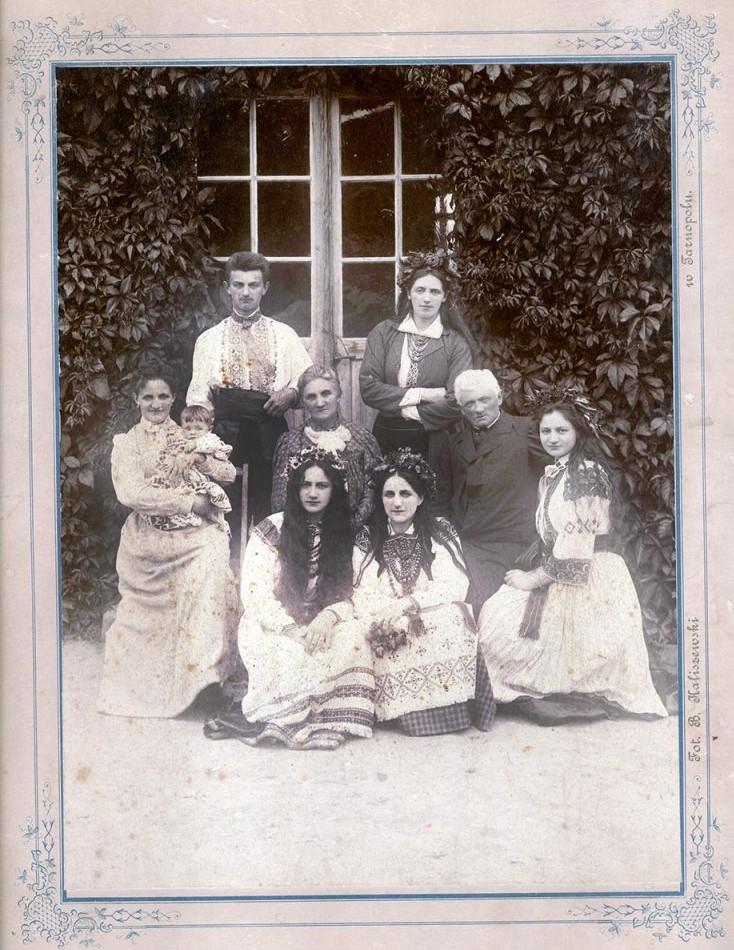
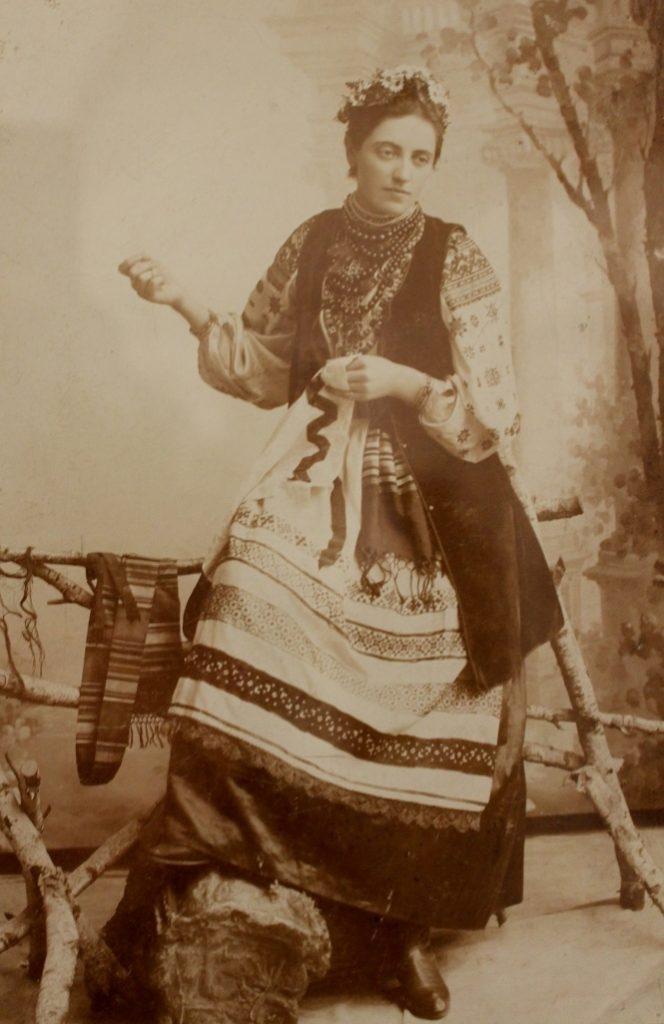
Another influential organization was the artistic and industrial union Trud, which played a significant role in promoting embroidery in Lviv and Galicia. Trud was a cooperative association of Ukrainian craftsmen and artisans that aimed to support and promote Ukrainian cultural traditions, including embroidery. They sought to revive and preserve traditional embroidery techniques, motifs, and designs. One of the ways Trud promoted embroidery was by organizing exhibitions and showcasing embroidered works. They actively encouraged local artisans to create high-quality embroidered pieces and provided them with a platform to display their craftsmanship.
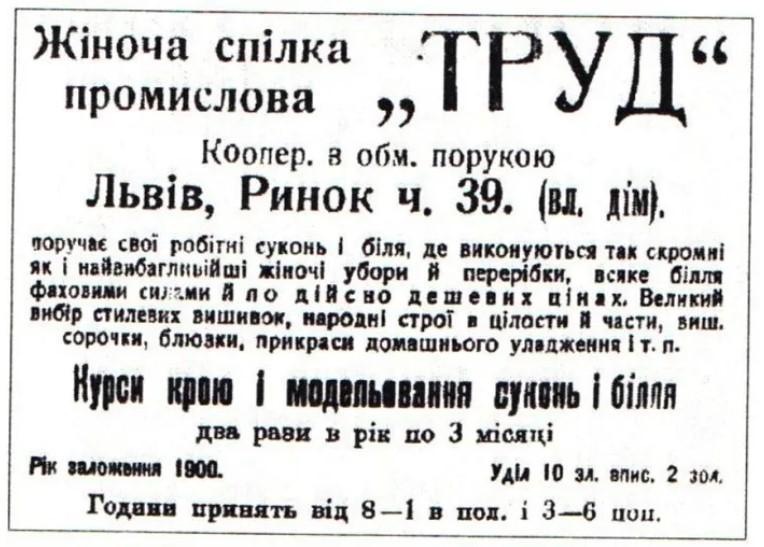
Folk Embroidery in Interwar Poland
The interwar period in Galicia witnessed two significant developments in the realm of Ukrainian attire: the emergence of the Halychyna Town Costume, predominantly worn during celebrations, and the integration of embroidery into fashionable everyday wear.
During this period, the use of embroidery continued to gain momentum, reaching a broader audience that included the middle class and urban dwellers. It was no longer limited to a select group of Ukrainian elites, writers, activists, and intellectuals.
The Halychyna Town Costume
Following the dissolution of the Austrian Empire, Galicia became a part of Poland, which exerted pressure on Ukrainian cultural identity. In response, a renewed wave of Ukrainian national consciousness emerged among the middle class and urban populations. While desiring to express their Ukrainian heritage, they were reluctant to adopt the peasant costume. As a result, they invented a distinctive alternative known as the Halychyna Town Costume (“Halychyna” means “Galicia” in Ukrainian).
Although not strictly a traditional Ukrainian folk costume, the Halychyna Town Costume drew inspiration from elements of peasant attire while evolving into a unique tradition in its own right. Throughout the interwar period, this outfit gained significant popularity. It could be found in various regions of eastern Galicia, except where strong local costume traditions persisted. While the specific details of the costume could vary, there was a generally recognized standard.
The Halychyna Town Costume was a festive outfit worn for specials occasions. Ukrainians donned these costumes for school photographs, theatrical performances, society gatherings, choir portraits, and other commemorative events.
Roman K. in his Folk Costume & Embroidery blog, has a wonderful, very detailed description of this costume in his post Halychyna Town Costume, Ukraine.
See also my separate article on the costume here:
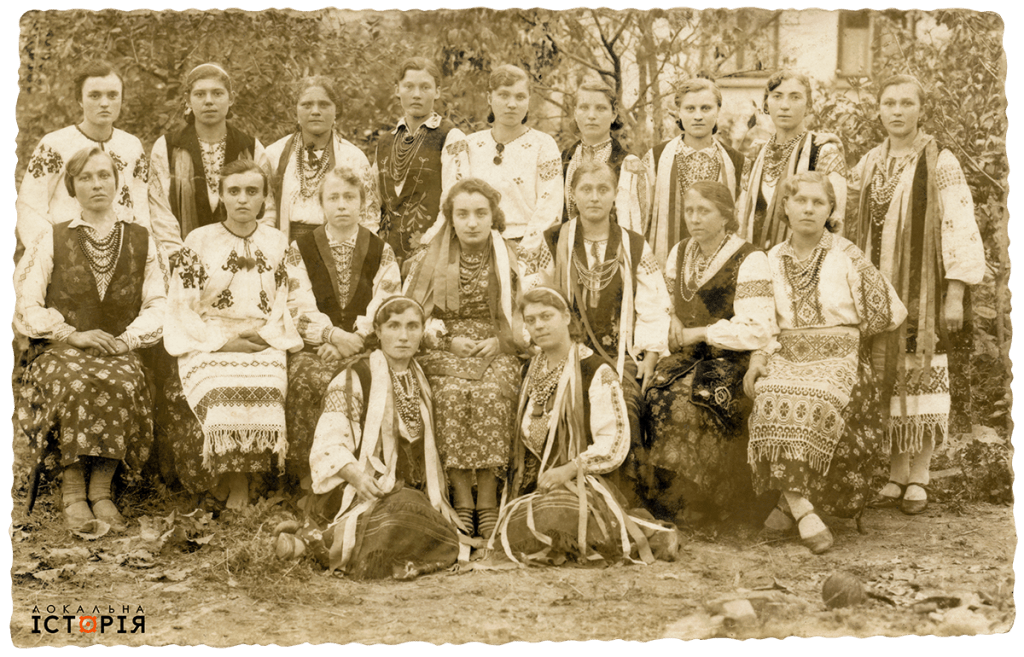
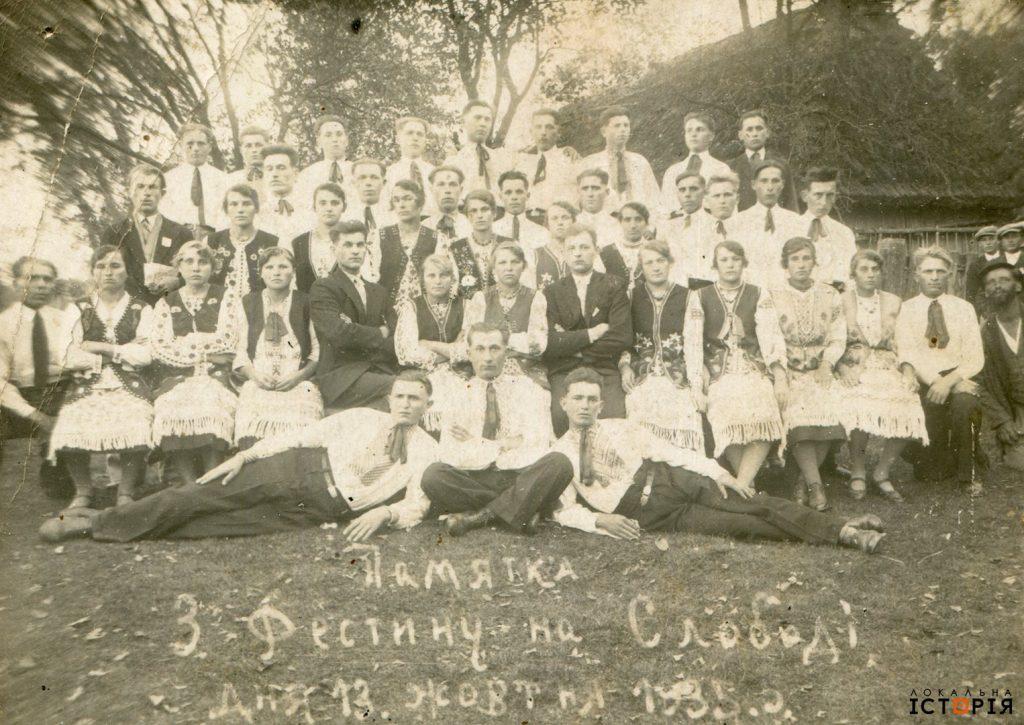
Folk Embroidery in Urban Clothing
During the 1930s and 1940s, the influence of folk embroidery on urban fashion became particularly widespread in Galicia. Nova Khata, a women’s magazine published in Lviv, played an active role in promoting the use of embroidered ornaments in both clothing and household fabrics. The range of products featuring embroidery was extensive, including stylish dresses, outfits for babies and schoolchildren, women’s bags, shawls, blouses, bed linen, pajamas, curtains, drapes, tablecloths, and even items for church purposes. The ornaments drew inspiration from the ustavka (inserts) of Bukovynian, Poltava, and Hutsul traditional folk shirts.
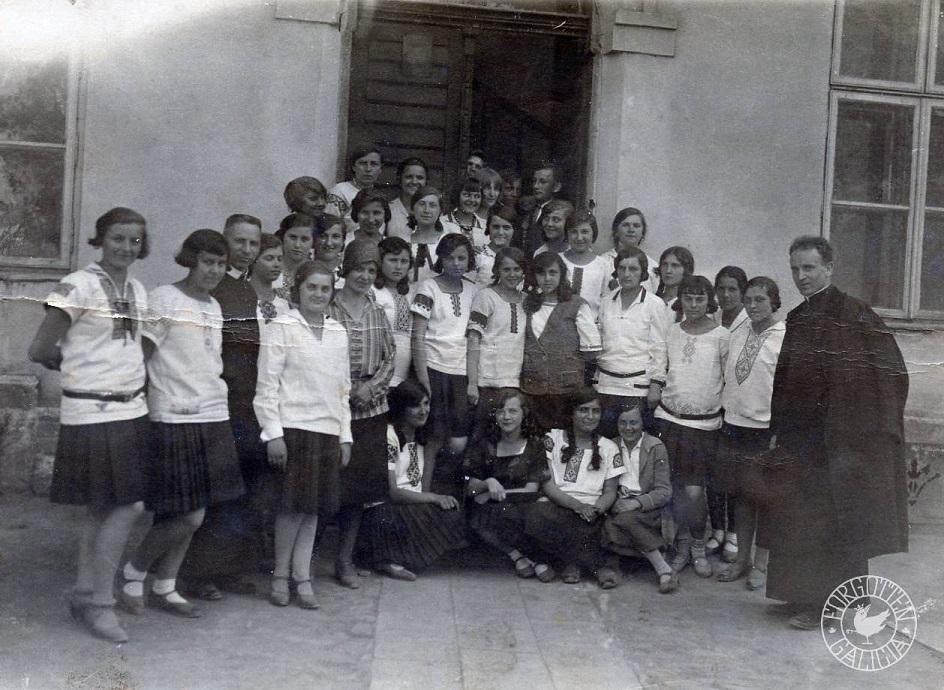
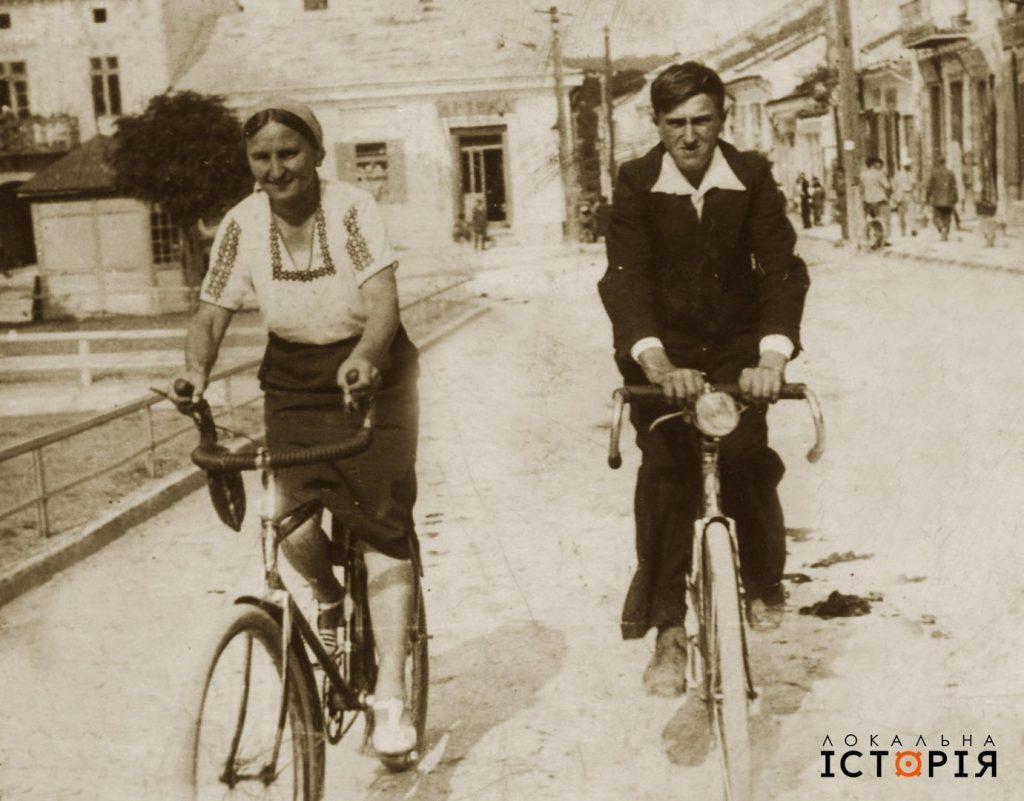
Nova Khata not only showcased these embroidered designs but also provided practical advice on how and where to incorporate the embroidery, how to create patterns without overwhelming the garments, and how to properly wash and iron decorated items.
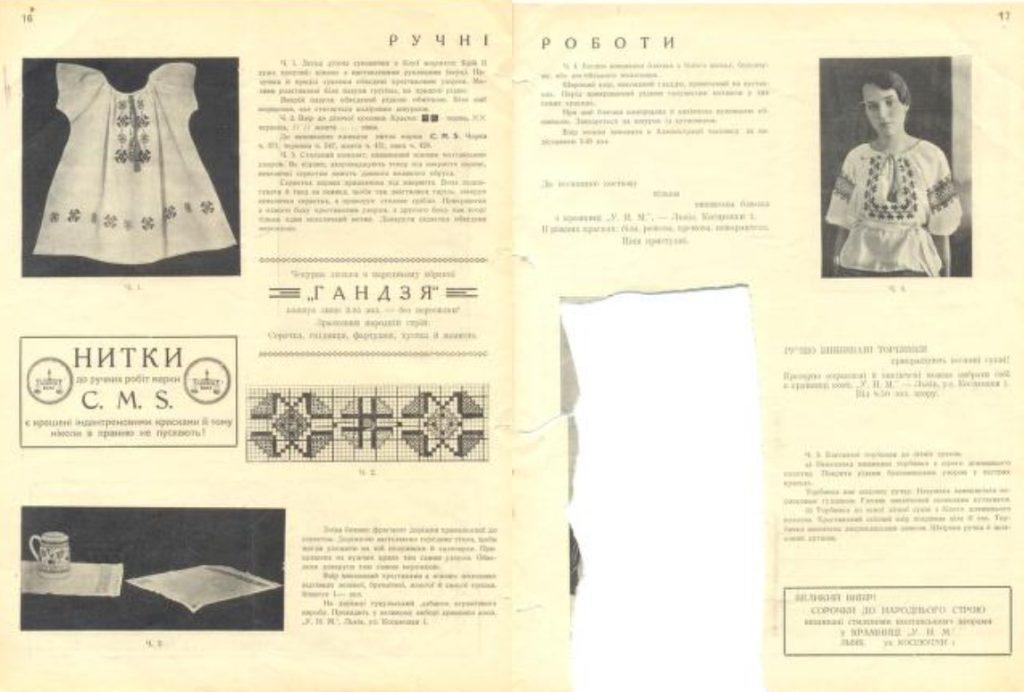
In 1934, every issue of the magazine featured a stylized graphic image of a Ukrainian girl in an embroidered shirt on the cover.
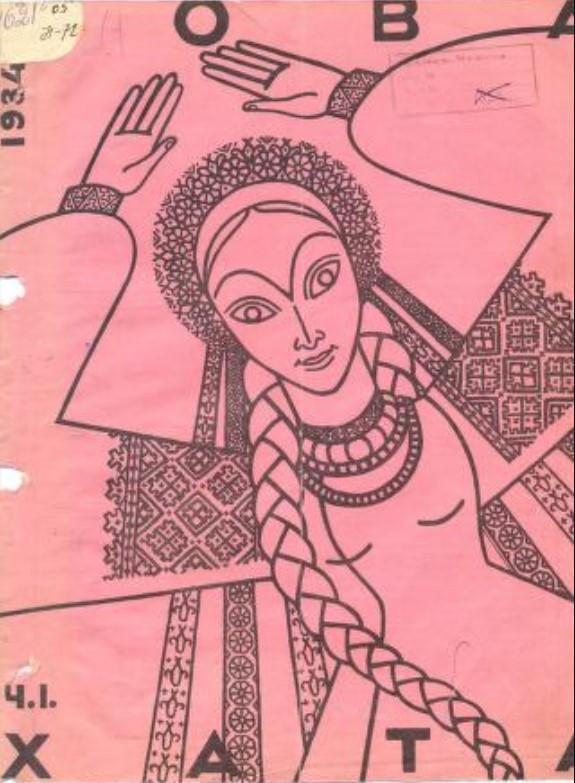

After the war, the tradition of including embroidery patterns in publications continued in the diaspora through the magazine Nashe Zhyttia. The editor-in-chief, along with a few other former contributors to Nova Khata, continued their work with the new magazine abroad. Each issue of Nashe Zhyttia featured an embroidery pattern printed on the back cover, allowing readers to engage with and incorporate Ukrainian embroidery into their own garments and household items.
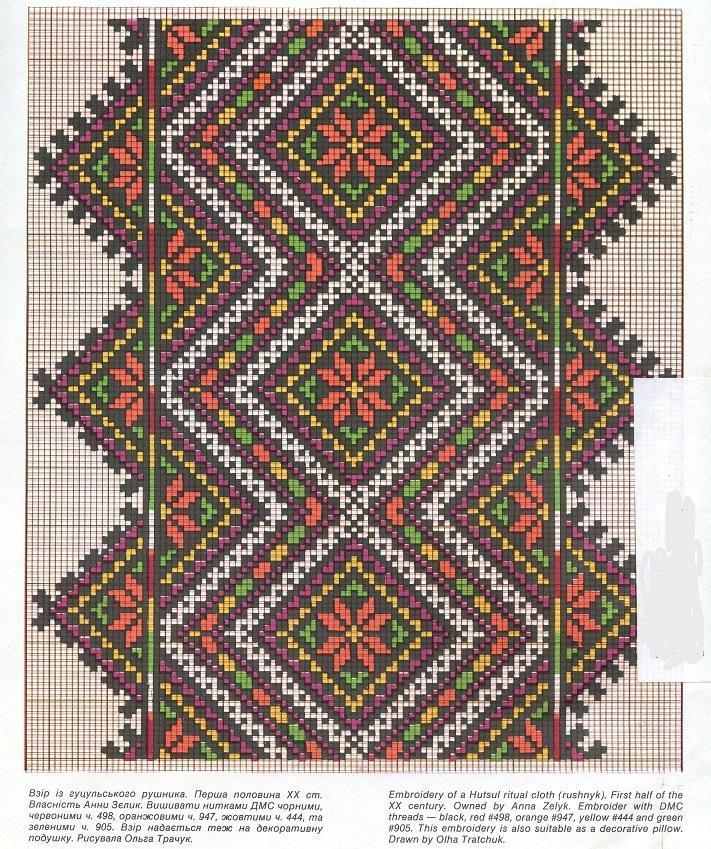
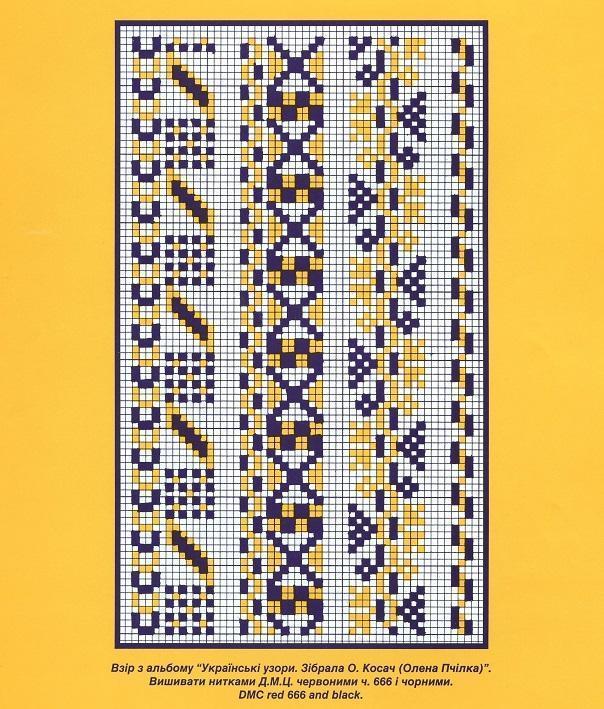
Today
After WWII, western Ukraine become part of the Soviet Union, where expressions of cultural and national identity were suppressed. In particular, the Soviets attempted to destroy the art of embroidery and restricted its wearing, for example, by forbidding vyshyvanky to be worn to school or on religious holidays like Christmas.
Despite the suppression during Soviet rule, Ukrainian embroidery persevered as a cherished tradition, kept alive within families and communities and in the diaspora. With the dissolution of the Soviet Union, there was a resurgence of interest in Ukrainian culture, particularly in western Ukraine. However, it was the events of EuroMaidan and the full-scale Russian invasion of Ukraine that propelled the revitalization of embroidery across the entire country.
There is even a Vyshyvanka Day – an international holiday that aims to preserve the Ukrainian folk traditions of creating and wearing ethnic embroidered clothes. Celebrated every third Thursday of May, the holiday is intentionally set on a weekday to emphasize that the vyshyvanka is “a component of the life and culture of Ukrainians, and not an ancient artifact.”
Today, we also see the continuation of the interwar trend of incorporating embroidery into modern clothing. Furthermore, we are seeing the use of new symbols, which represent today’s new challenges. One of the best examples is the military vyshyvanka with tanks and armored personnel carriers that was made for President Zelensky.
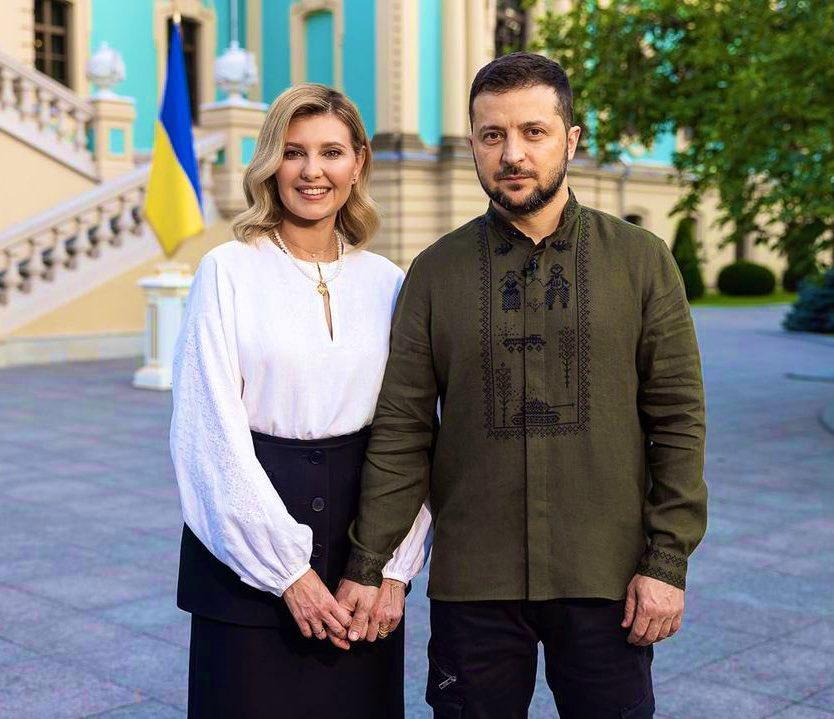
Moreover, the tradition of wearing vyshyvanky on special occasions, which originated over a century ago, has experienced a resurgence. Notably, on the first day of school, many Ukrainian schoolchildren proudly don vyshyvanky, replacing the Soviet-era costumes that persisted long after independence.
But in fact, today it’s not limited to special occasions – at least in Lviv, I can say that it is a rather common sight these days to encounter individuals adorned in vibrant and intricate embroidery going about their daily lives.
The revival of Ukrainian embroidery holds profound significance, particularly in light of the ongoing aggression and Russia’s attempts to eradicate Ukrainian identity and heritage. It serves as a powerful symbol of resilience, defiance, and the enduring spirit of the Ukrainian people in preserving their cultural legacy.
By Areta Kovalska
Sources:
Roman K, “Halychyna Town Costume, Ukraine”
Yulia Pavlenko, “Embroidery in the Clothes of the Ukrainian Intellectual Society at the Turn of 19th – 20th Centuries”
Українське народне вбрання та міська мода
Тимчук, З.Ю., “Народна вишивка у міському середовищі Галичини 30–40 рр. ХХ ст.”
Уляна Явна, “Феномен “Нової Хати”. Яким був жіночий журнал на Галичині”
Zora Mintalová-Zubercová, “Impact of Folk Clothing on Urban Clothing in Slovakia”
Ірина Кодлубай, “Як одягалися львівські модниці 100 років тому”
Photos:
Локальна Історія

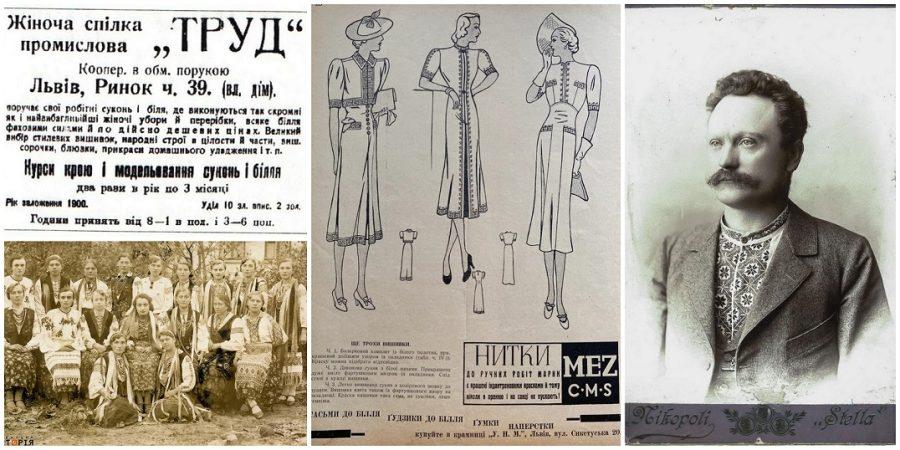




Interesting would you say that even every village had its own style and colours used in design sof womens blouses